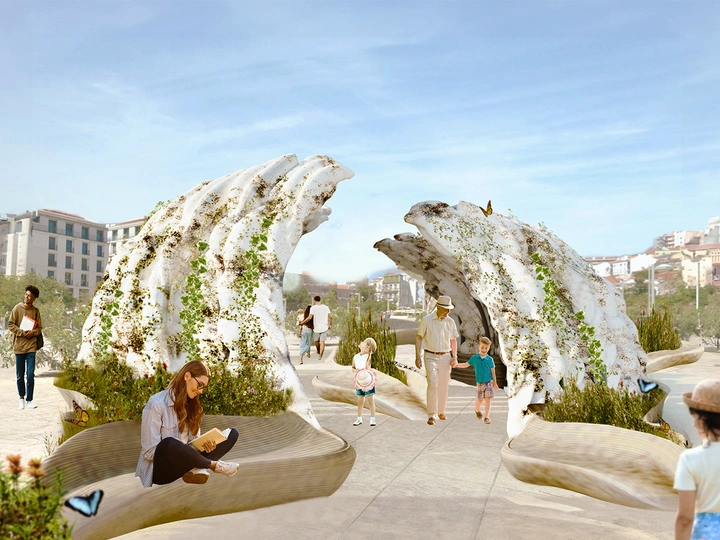Urban MYCOskin

Rita Morais
Natalia Piórecka
Natalia Piórecka and Rita Morais bring together a diverse set of skills from architecture, design, and science to address environmental challenges through innovative biodesign solutions. Their combined expertise in biomaterials, environmental studies and digital technologies has been crucial in pushing the boundaries of sustainable design.
Rita, a Portuguese interdisciplinary researcher, biodesigner, and artist, is passionate about merging biology with digital technologies to propose innovative solutions. Her work is centered around exploring the potential of bio and living materials through scientific research, computational design, and envirnomental analysis. Rita pursued a MArch in Bio-Integrated Design from UCL's Bartlett School of Architecture, following her Bachelor's in Business from Nova SBE, in Lisbon.
Natalia is Polish, interdisciplinary designer and researcher with a strong focus on biodesign and sustainable development. Her work centers around bridging architecture with science, aiming to redefine design and ecology. She holds a Bachelor's degree in Architecture from Newcastle University and a Master's degree in Bio-Integrated Design from the Bartlett School of Architecture at UCL, winning the "Bartlett's Best MArch Award". Her work focusing on working with living organisms like mycelium or bacteria and robotic fabrication have earned her recognition, including a feature in Forbes' "25 under 25" or awards like Green Product Award of IF Design Award.
Urban MYCOskin, an international project led by this team, was developed at the Bio-ID lab at Bartlett School of Architecture. It received recognition at the New European Bauhaus Prizes 2024, winning in the category of "Shaping a circular industrial ecosystem and supporting life-cycle thinking" for its innovative use of mycelium-based materials to repurpose urban waste into sustainable architectural solutions. Additionally, it was showcased at various exhibitions and conferences within the field.
Urban MYCOskin proposes an innovative bioactive structure that explores the dynamics of growth and decay through the utilization of mycelium, the root system of mushrooms. Mycelium serves as a natural binder and waste manager, creating lightweight, biodegradable, and bioreceptive composite materials. This project integrates computational simulations, environmentally responsive design principles, and advanced fabrication techniques to create resilient urban interventions.
By combining fabric forming with mycelium composites and robotic 3D printing, the project envisions an adaptable architectural framework suitable for various environments. Through diverse manufacturing methodologies, it incorporates sacrificial formworks and explores the concept of 'prescribed decay,' leveraging mycelium's potential as a dynamic architectural element. This approach embraces circularity by upcycling agricultural and fashion waste.
The environmentally informed geometrical topologies, integrating passive cooling systems and green infrastructure to counteract the urban Heat Island Effect, promotes microclimates, and fosters a biodiverse urban ecosystem. Initially conceived for Praça Martim Moniz in Lisbon, where climate vulnerabilities and cultural diversity intersect, the project's adaptable nature enables replication in diverse sites through tailored geometry and ecological assessments.
Prioritizing community involvement, the project cultivates inclusive spaces that attract diverse visitors, enhancing social cohesion and ownership. By combining digital fabrication with computational design, Urban MYCOskin optimizes performance within material constraints, enhancing green spaces, air quality, and overall urban livability. This holistic approach revitalizes urban areas while nurturing cultural enrichment and community well-being.